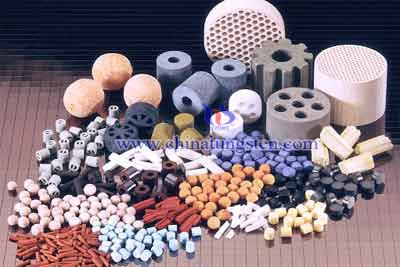Iron, Cobalt and Tungsten Mixed OER Catalyst
- Details
- Category: Tungsten Information
- Published on Thursday, 30 June 2016 16:01
Researchers at the University of Toronto in Canada and Stanford University in the US say that they have made the best oxygen-evolving reaction (OER) catalysts to date. The new catalysts, which are made from gelled multimetal oxy-hydroxides, have nanoporous structures and large specific surface areas containing lots of active sites for electrolytic reactions like the OER. The oxy-hydroxides can be prepared in a simple room-temperature process, which means that they might readily be scaled up to industrially relevant volumes.
The OER is one of the main processes occurring in metal-air batteries, solar water splitting and solar-powered fuel cells in general. It can be used to produce oxygen from water and as such could be a clean and renewable way to generate energy. Unfortunately, the reaction is rather slow and researchers are trying to find efficient catalyst materials to help speed it up. Although oxides based on ruthenium and iridium are good in this respect, these metals are expensive, which means they cannot realistically be used to make devices on the large scale.

Researchers say they have now discovered a new class of efficient catalyst for the OER based on the metals iron, cobalt and tungsten mixed together homogenously in an oxy-hydroxide framework that do have a nanoporous structure with large numbers of electrochemically active sites. The gelled multimetal structures can also be prepared via a simple room-temperature process, so they could easily be produced in large quantities.
The team began by dissolving precursors for all the metals in a polar organic solvent to form a homogenous solution. "By choosing suitable reagents, auxiliary agents and reaction conditions, we coordinated the hydrolysis of the different metal precursors, such that they were programmed to occur at similar rates to one another," explains Sargent. "This approach allowed different metal oxy-hydroxides to form simultaneously in an atomically homogenous distribution. Combining the metals in this way is challenging, since metals and metal oxides tend to phase-separate in crystalline oxides."

"Using state-of-the-art computational tools and powerful computers, we were able to understand, on the atomic scale, why and how the multimetal component oxide works," explains Vojvodic. "For example, an active site, where the OER takes place, containing cobalt, iron and, importantly, tungsten was found to be crucial."
| Tungsten Oxide Supplier: Chinatungsten Online www.tungsten-oxide.com | Tel.: 86 592 5129696; Fax: 86 592 5129797;Email:sales@chinatungsten.com |
| Tungsten News & Prices, 3G Version: http://3g.chinatungsten.com | Molybdenum News & Molybdenum Price: http://news.molybdenum.com.cn |



 sales@chinatungsten.com
sales@chinatungsten.com